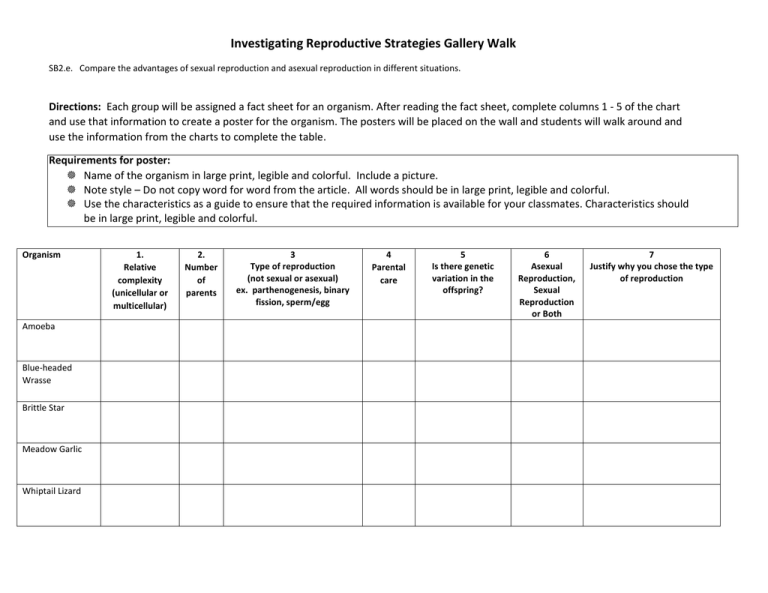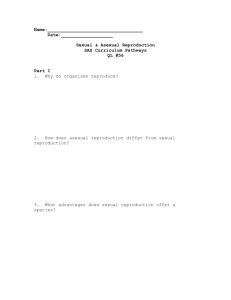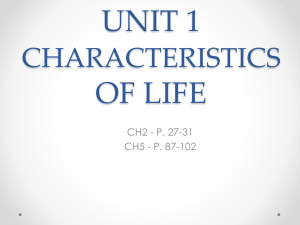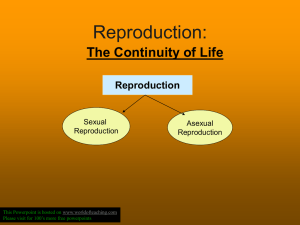File
advertisement

Investigating Reproductive Strategies Gallery Walk SB2.e. Compare the advantages of sexual reproduction and asexual reproduction in different situations. Directions: Each group will be assigned a fact sheet for an organism. After reading the fact sheet, complete columns 1 - 5 of the chart and use that information to create a poster for the organism. The posters will be placed on the wall and students will walk around and use the information from the charts to complete the table. Requirements for poster: Name of the organism in large print, legible and colorful. Include a picture. Note style – Do not copy word for word from the article. All words should be in large print, legible and colorful. Use the characteristics as a guide to ensure that the required information is available for your classmates. Characteristics should be in large print, legible and colorful. Organism Amoeba Blue-headed Wrasse Brittle Star Meadow Garlic Whiptail Lizard 1. Relative complexity (unicellular or multicellular) 2. Number of parents 3 Type of reproduction (not sexual or asexual) ex. parthenogenesis, binary fission, sperm/egg 4 Parental care 5 Is there genetic variation in the offspring? 6 Asexual Reproduction, Sexual Reproduction or Both 7 Justify why you chose the type of reproduction Organism 1. Relative complexity (unicellular or multicellular) 2. Number of parents 3 Type of reproduction (not sexual or asexual) ex. parthenogenesis, binary fission, sperm/egg 4 Parental care 5 Is there genetic variation in the offspring? 6 Asexual Reproduction, Sexual Reproduction or Both 7 Justify why you chose the type of reproduction Salmonella Spiny Water Flea Duck Leech Writing Assignment: Finally, to show your understanding of the concepts, write 1 – 2 paragraphs that explains the advantages and disadvantages of asexual reproduction and sexual reproduction. Use the information you gathered during the gallery walk to support your paragraphs.







